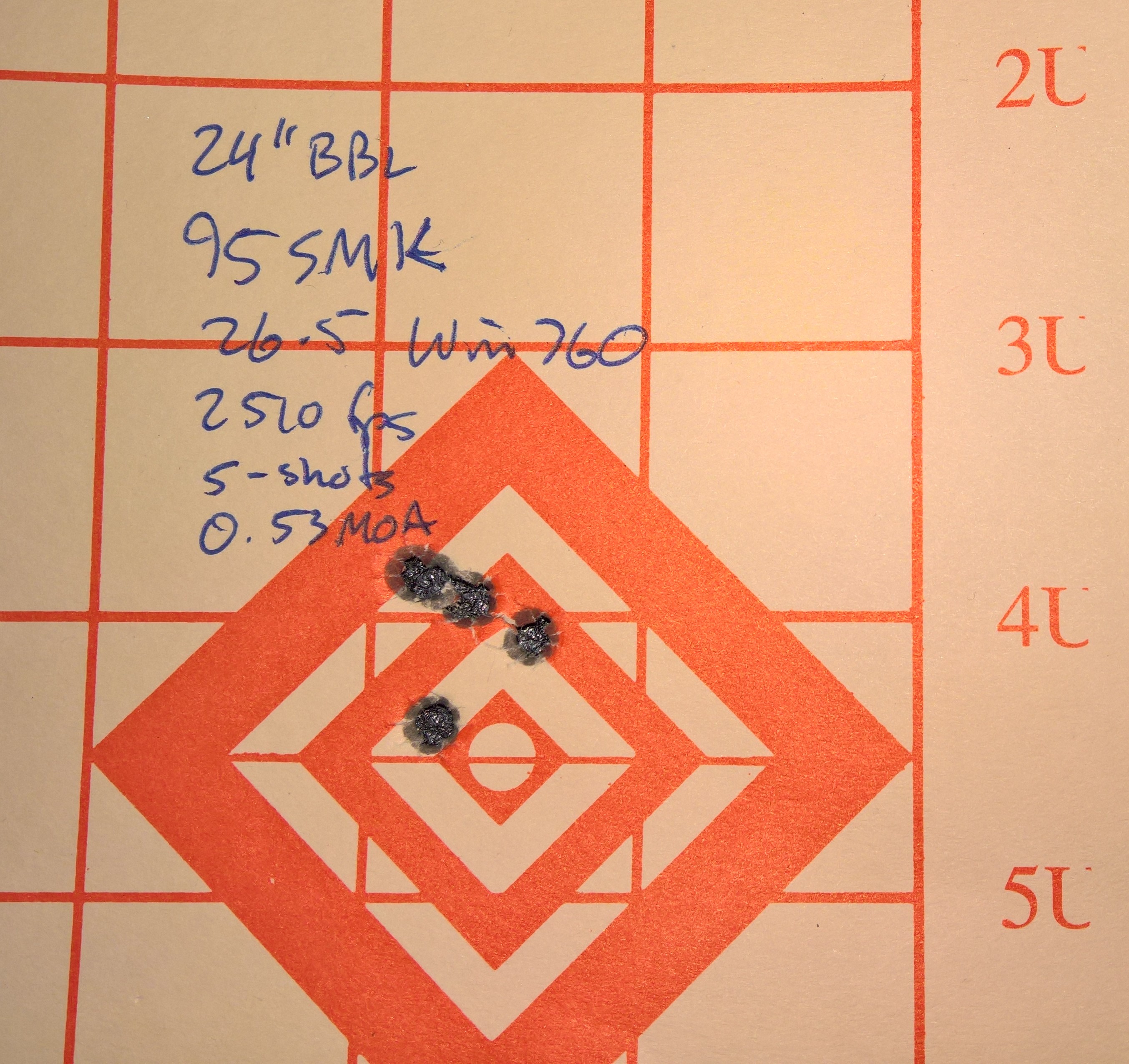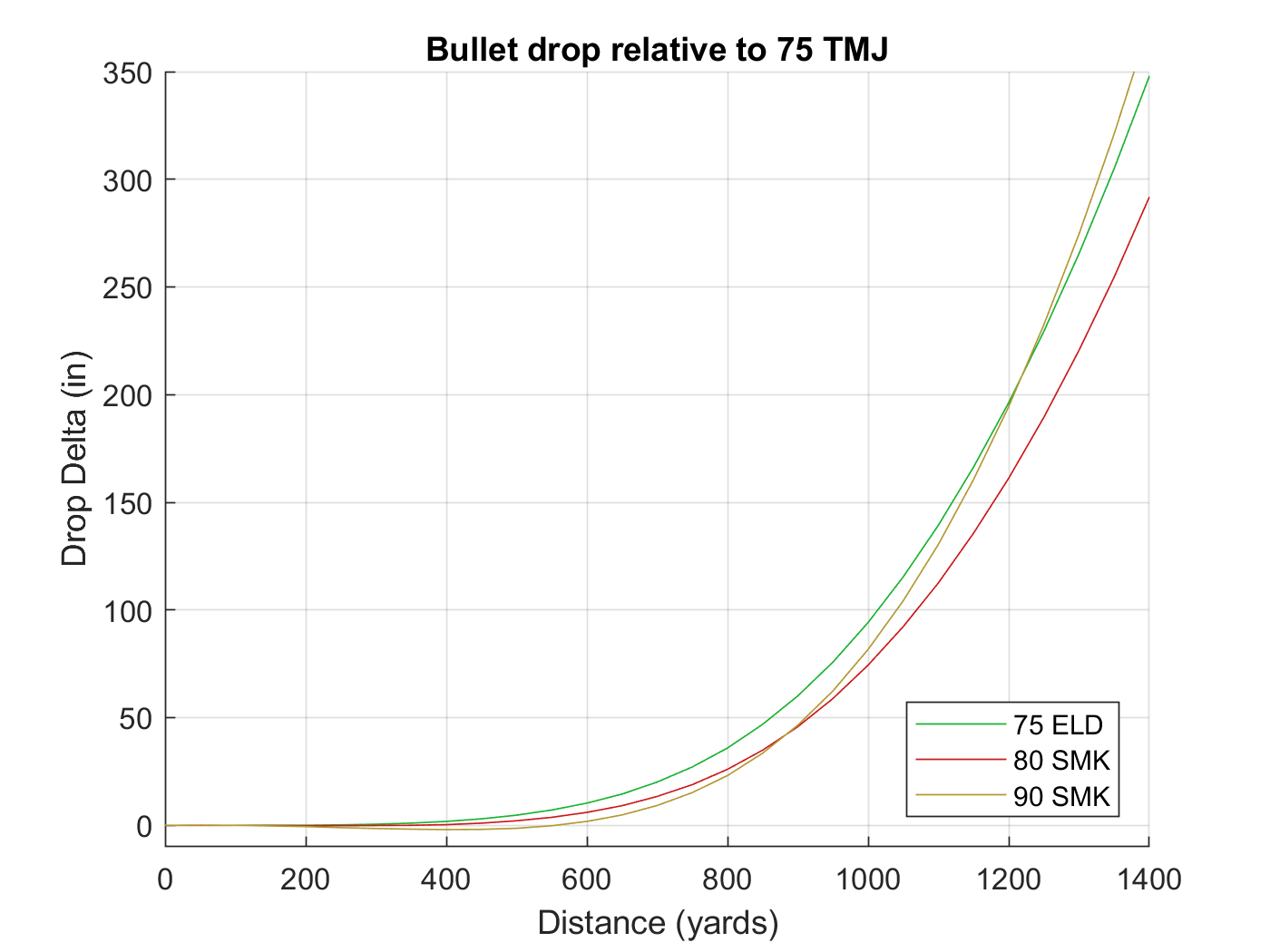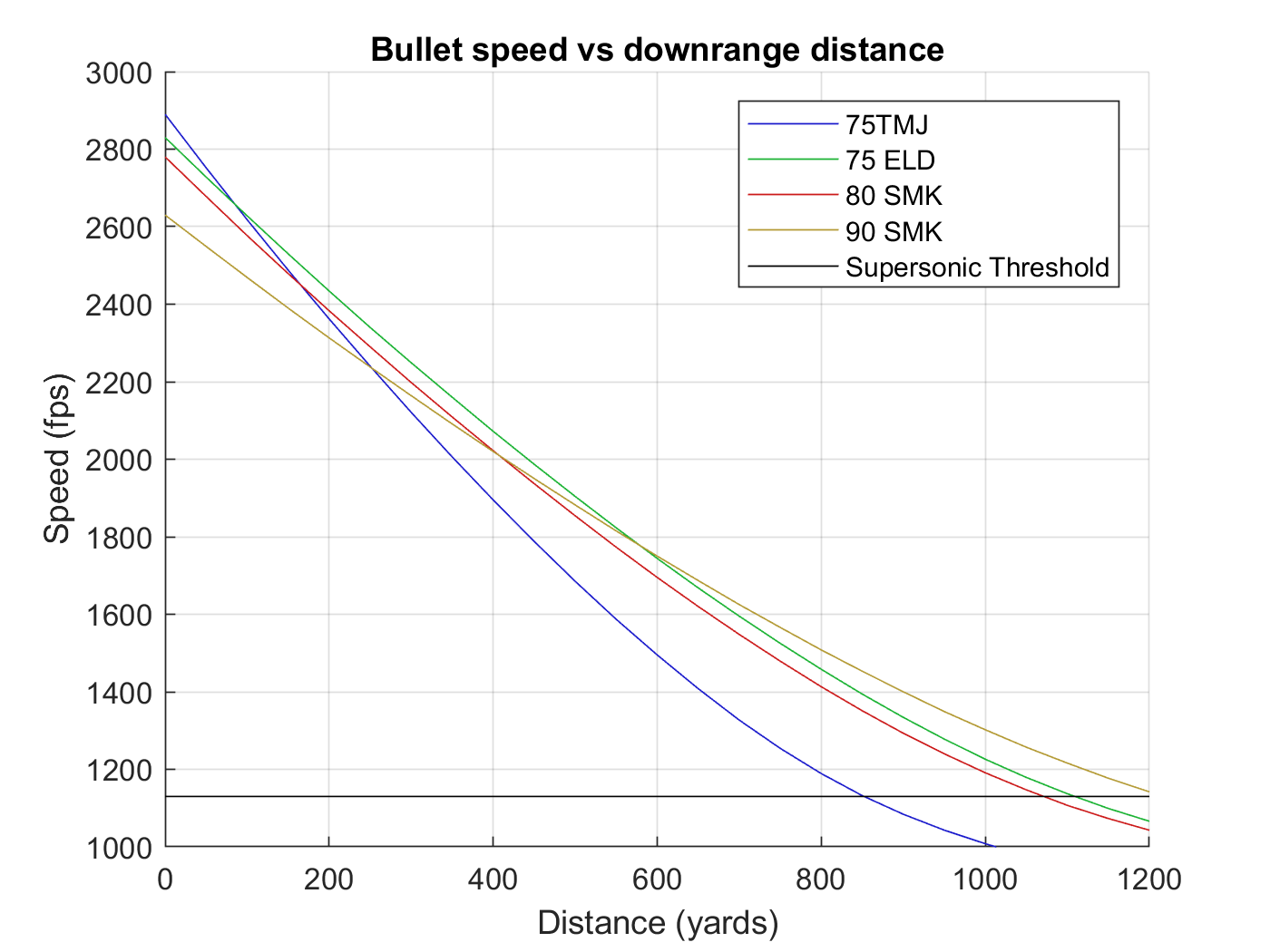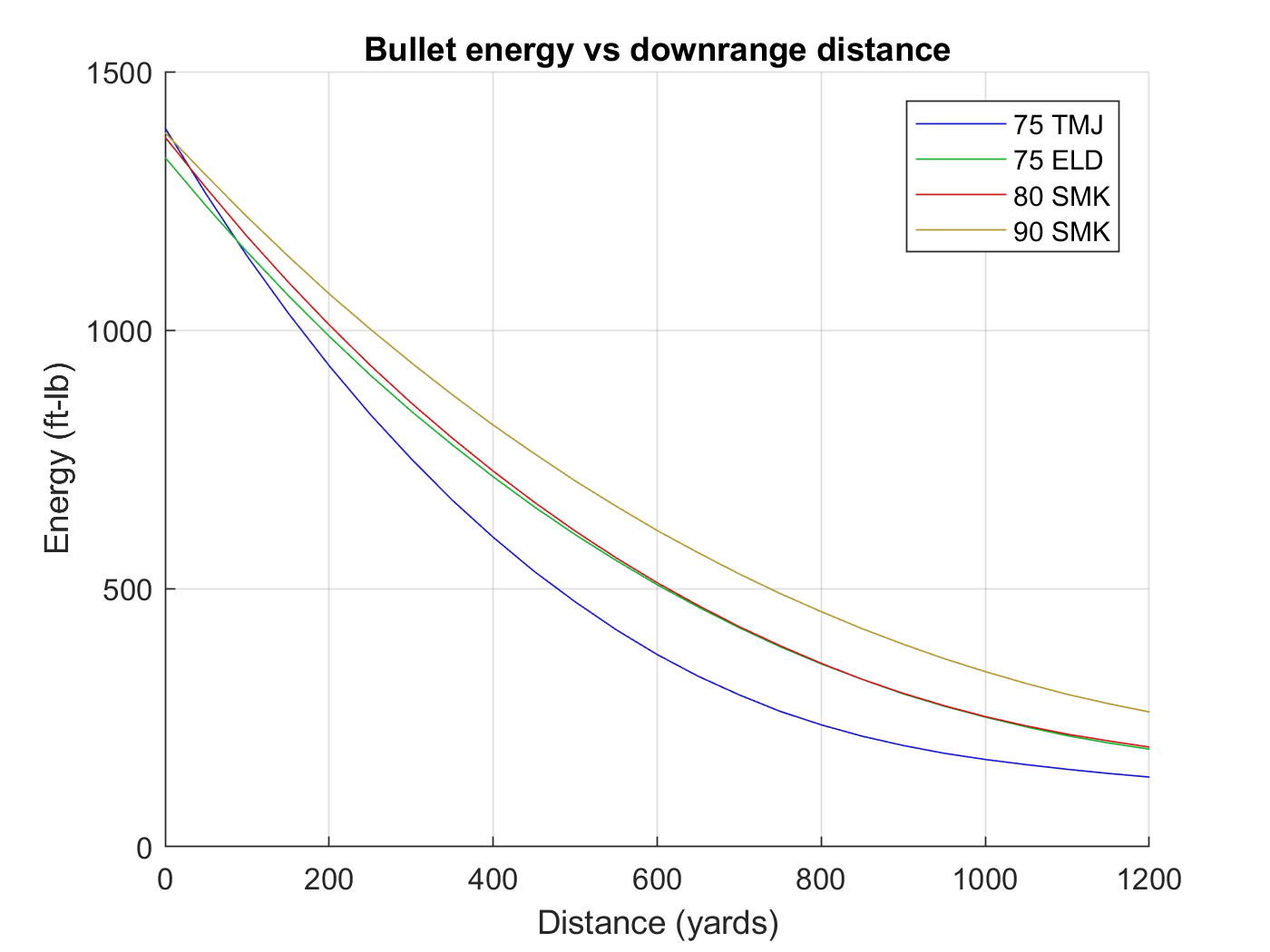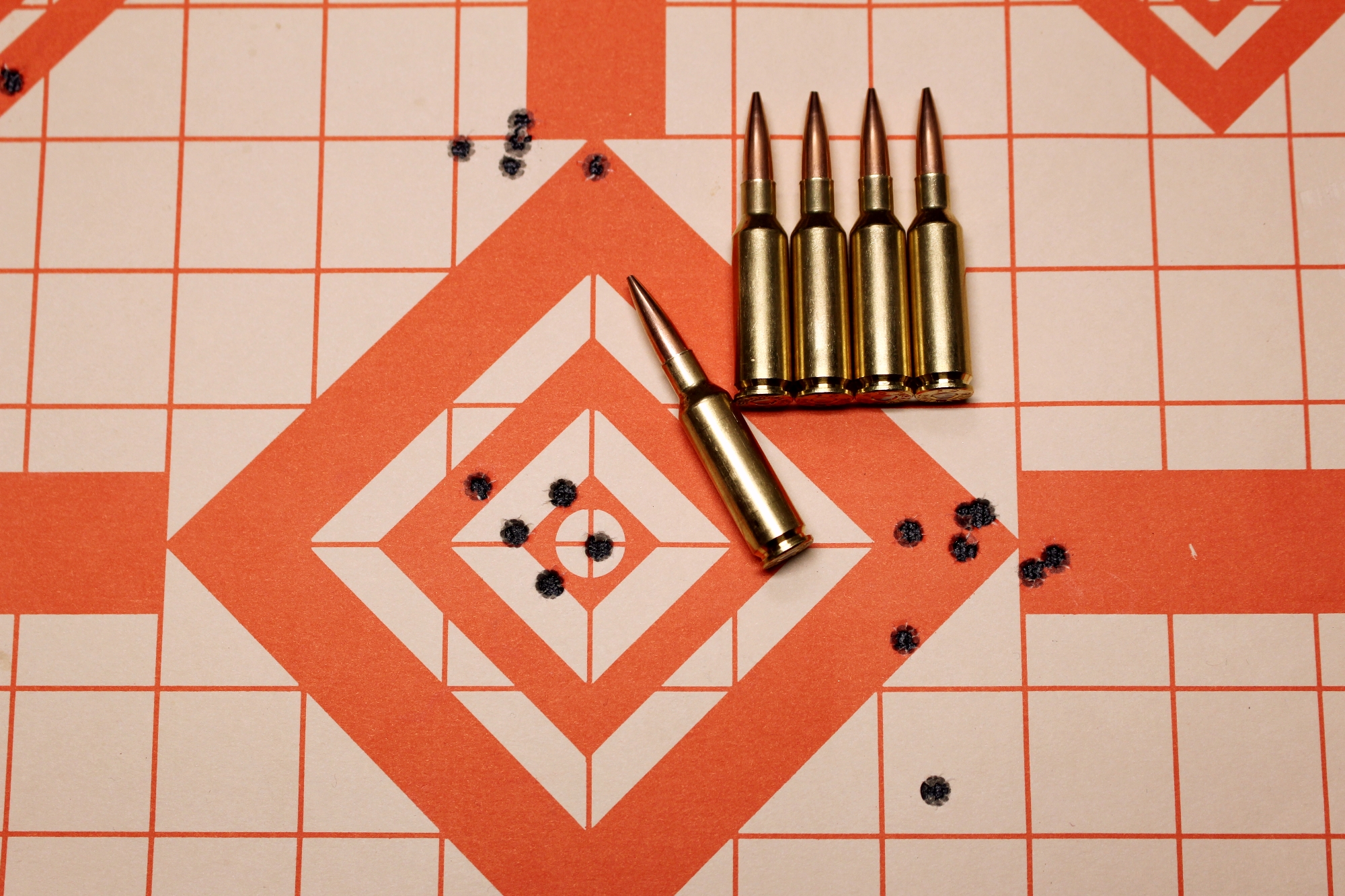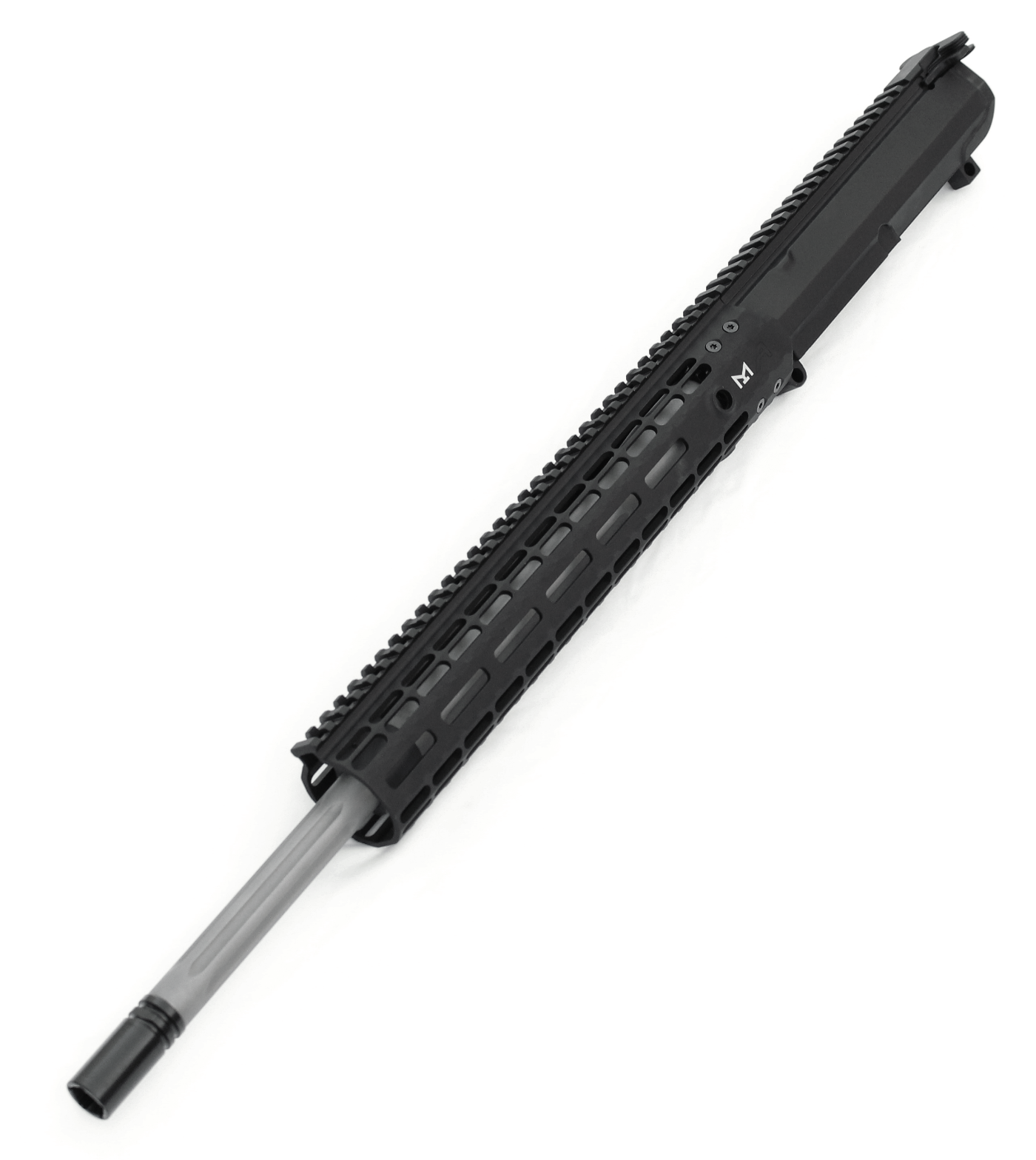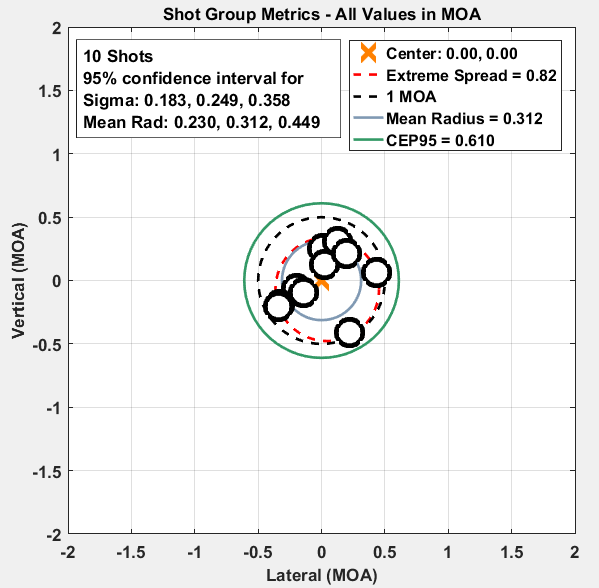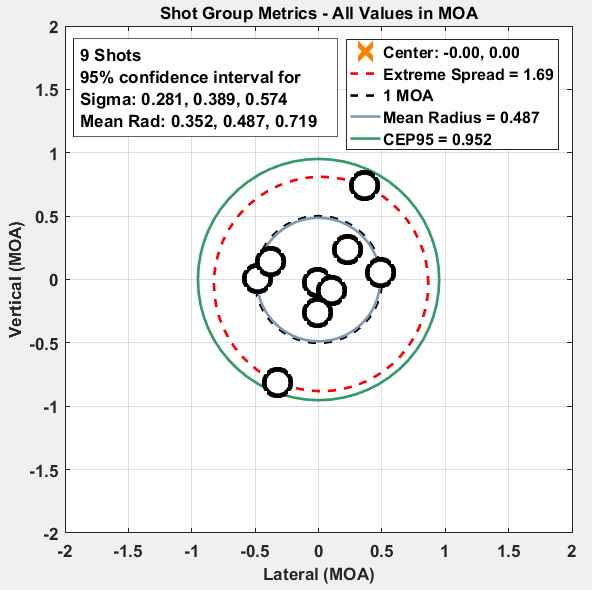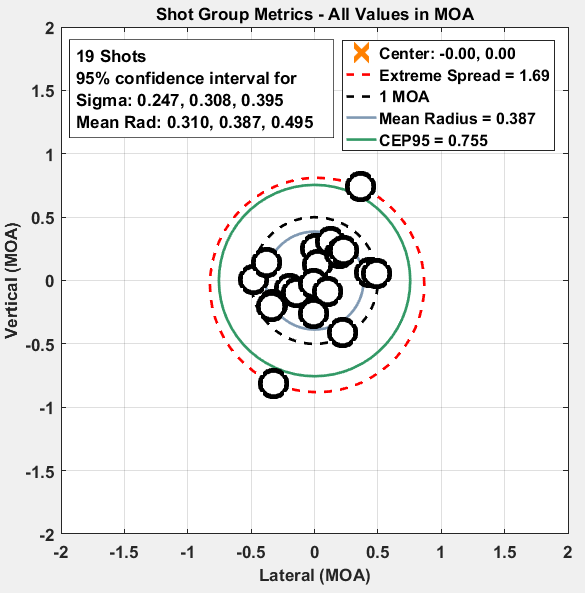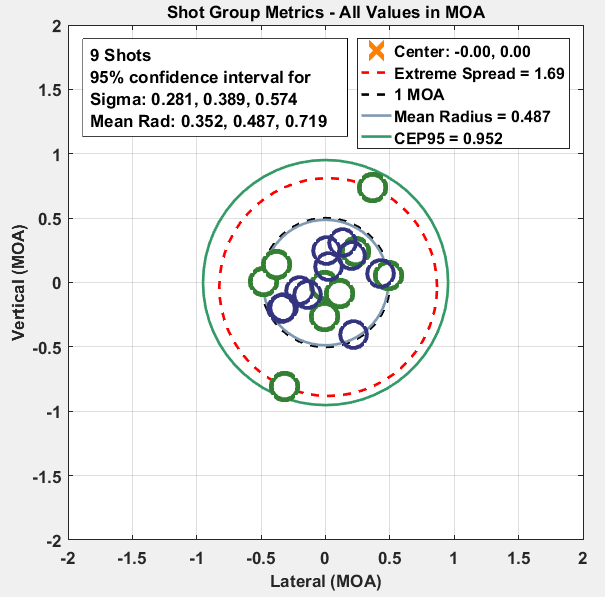I took the .224 Valkyrie out to the 1000 yard line on Thursday at Douglas Ridge Rifle Club in Oregon. It’s about time I got to stretch the Valk’s legs. I was shooting the 95 SMK in a Bison 24″ 1:6.5″ twist barrel. My muzzle device was an Elite Iron brake that I normally use with their Bravo 1 silencer but my DOPE for my previous sight in was taken without the silencer so I kept it like that for this session. Here’s the view from the targets looking back at the firing position:
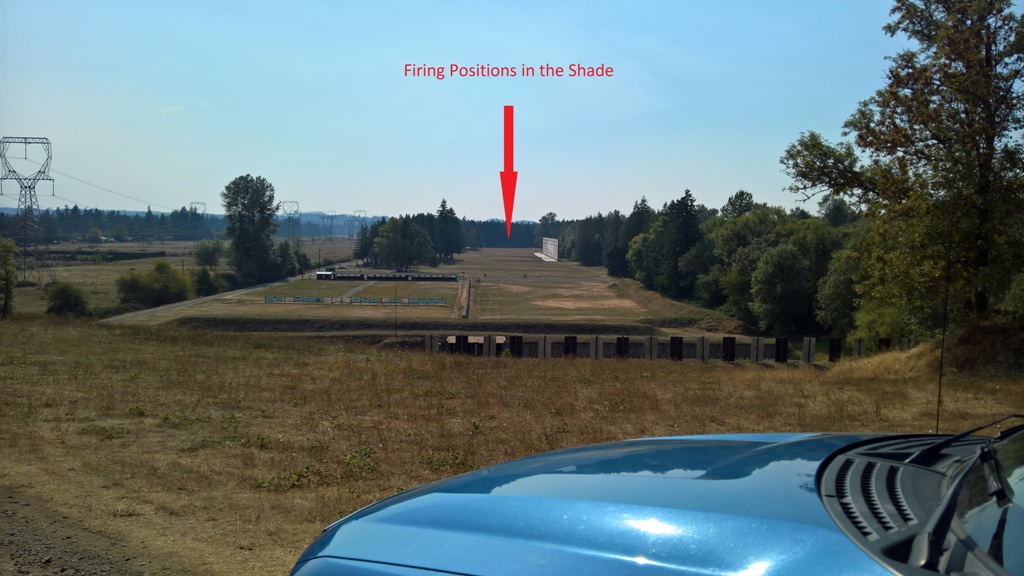
The target positions are behind me. The targets in front are for 200 to 600 yard service rifle competitions. Here’s the view from the 900 yard firing line:
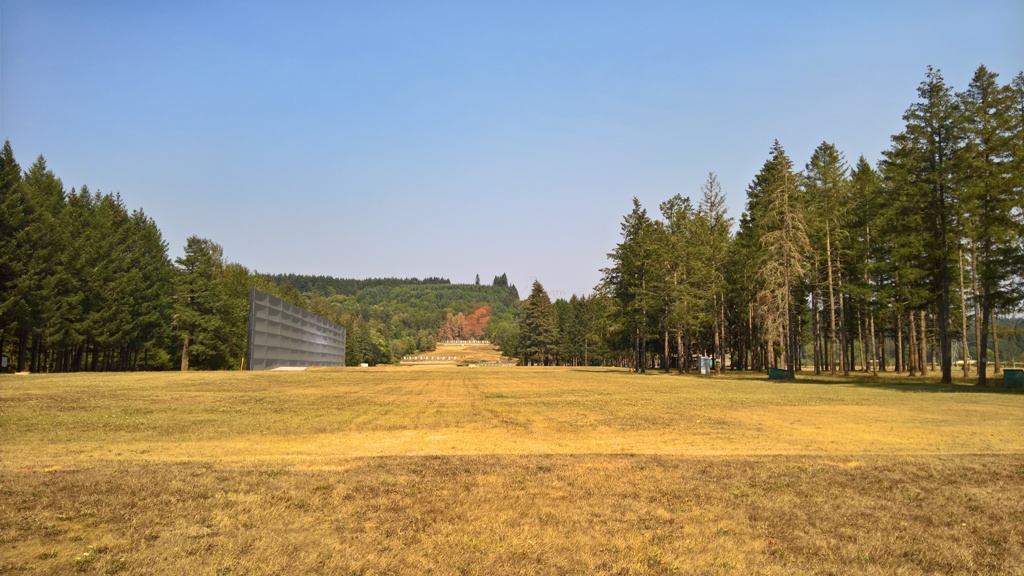
Turns out it helps to get on paper to know which firing line you are at. I thought I was at the 800 yard line and I ended up wasting quite a bit of ammo getting on paper. Checking against my DOPE and ballistics data I was quite puzzled at the almost 7.8 mils of come up needed to get on paper when I had computed something more like 6.8 mils were needed. Thanks to the low recoil of the .224 Valkyrie I was able to see the rounds hitting the dirt which told me I was a ways off. Wasting ammo with my bald spot blasted by the late afternoon sun wasn’t my idea of fun. But I did get on paper and then back to the 1000 yards line we go. Shade is a good place to shoot from.
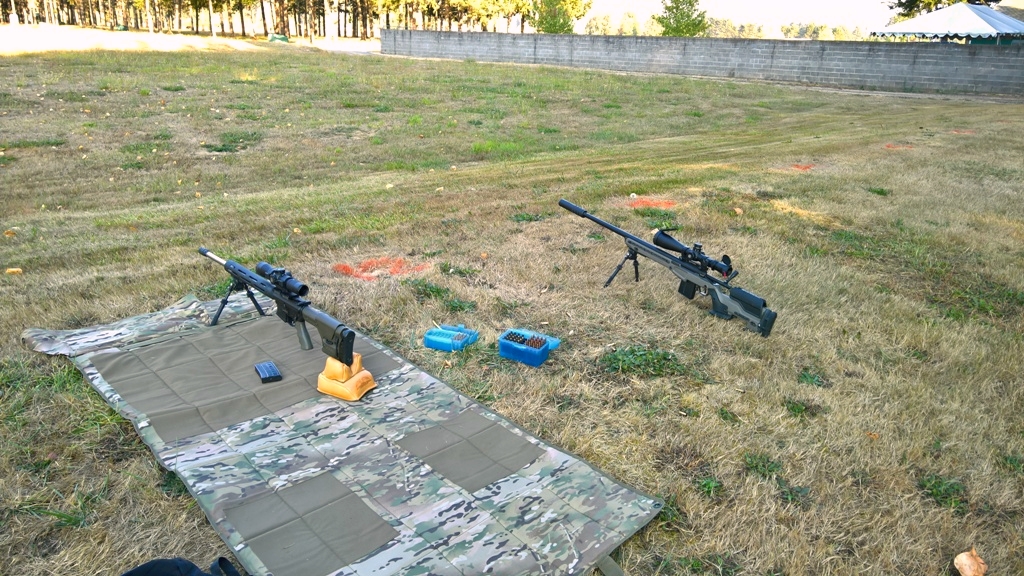
The .260 Rem got to try 1000 yards too. The DOPE for that one was way off as well, you’d think that would have told me something. I got on paper and then changed targets. I should have taken a photo of the Caldwell Target Camera LR system that I was using. This thing was the best $350 I’ve spent in a while.
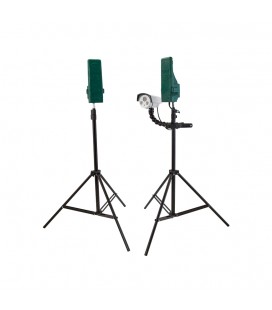 I have no Android or iOS devices So I had to improvise. You can log into the camera through a website. The IP address of the camera is marked on the side, which in my case is 192.168.0.3, and then provide the username admin with the password 12345 and you get to a menu written in Chinese. Selecting the second item in the menu gets you to the live feed from the camera.
I have no Android or iOS devices So I had to improvise. You can log into the camera through a website. The IP address of the camera is marked on the side, which in my case is 192.168.0.3, and then provide the username admin with the password 12345 and you get to a menu written in Chinese. Selecting the second item in the menu gets you to the live feed from the camera.
A note about this system: I couldn’t see a single hole in the target black though I hit it several times. Hits in the white are clearly visible. I recommend using these targets for 1000 yard shooting with the Caldwell Target Vision camera system:
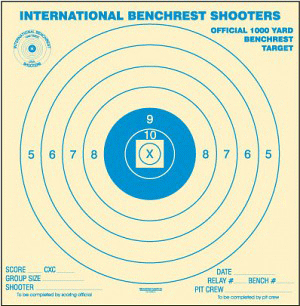
I haven’t used this target yet but I think it will work well. It’s 42″ square and I think light enough to see the bullet strikes. I was using white cardboard which worked really well too, but didn’t cover the target black behind it completely so it I could not make out the bullet holes that were not in the white. I’ll report back after my next session later this month about how the IBS targets worked out.
As one might guess, getting on paper at 1000 yards given my confusion about which line I was shooting from at 900 yards, a little work was needed to get on paper at 1000 yards. Again puzzling because once on paper my come up was 9.2 mils when I had expected 10 mils from my ballistics computations and then probably more given the 7.8 mils I thought I needed at what I thought was 800 yards. Both the .260 Rem and the .224 Valkyrie were consistently inside 12″, which is pretty good for me given that I’d never shot at this distance before. Winds were consistently inconsistent but at about 5 mph. The direction changed often and sometimes died out completely only to come back again 30 seconds later. First time out at 1000 yards, the range all to myself, what’s not to like:

Holy mackerel, my nose isn’t nearly that big in real life, I swear! Now that I’m dialed in, I’ll be shooting some groups my next outing instead of just spraying all over the target while constantly adjusting my windage and elevation. Conclusion: .224 Valkyrie can shoot at 1000 yards. Next time: 80 SMK loaded to about 2850 fps in the 24″ barrel. Oh yeah, after wrapping up for the day I noticed that the 800 and 1000 yard berms were really close together. That’s when the dam broke and I realized I’d been shooting at 900 and not 800, argh!
